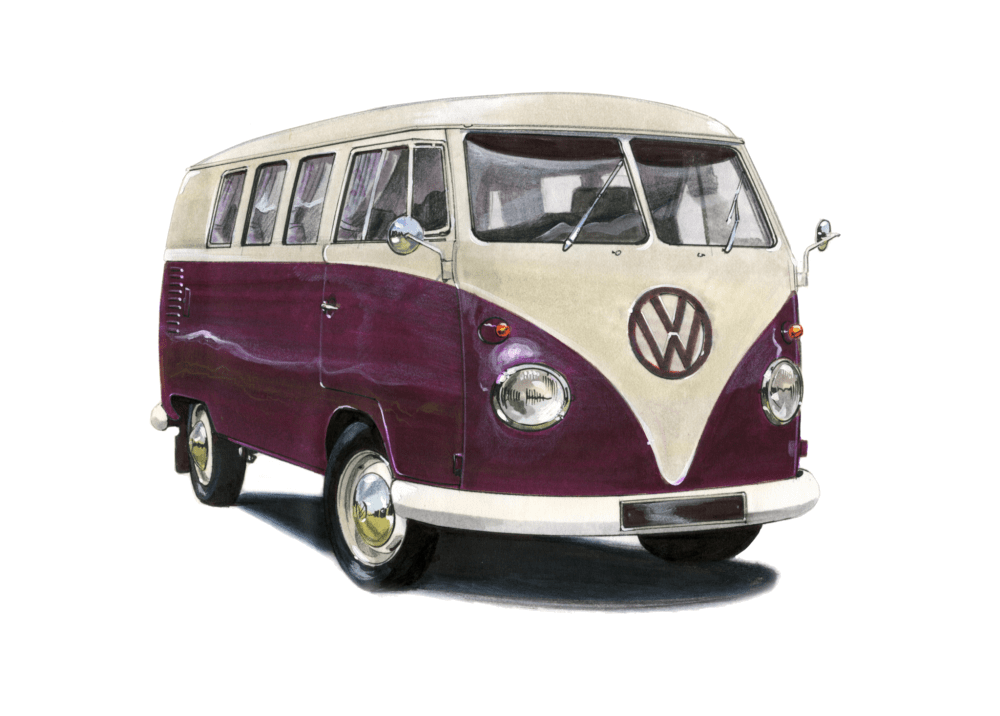
Few vehicles have achieved the kind of cult status that the Volkswagen Campervan T1 has enjoyed over the years. Introduced in the early 1950s, this iconic vehicle is loved by many for its distinctive design, practicality, and charm. The T1 Campervan, also known as the “Bulli,” “Kombi,” or “Microbus,” was the forerunner of the modern cargo and passenger vans. Despite its vintage, the T1 continues to garner attention and affection from car enthusiasts, collectors, and lifestyle travelers all over the world. In this article, we’re going to delve into the notable features of the Volkswagen Campervan T1 that has made it an enduring icon.
One of the most striking and beloved features of the VW Campervan T1 is its design. With its round, friendly face and V-shaped front panel painted in a different color than the rest of the body, the T1 has iconic aesthetics that are instantly recognizable. It’s a design that encapsulates the post-war optimism of the 1950s and the carefree spirit of the 1960s, turning it into a symbol of freedom, peace, and love.
The T1’s boxy shape, along with the fact that it’s essentially a van, offers tremendous versatility. The model was initially marketed as a cargo van, passenger van, and a camper van, which forms the basis for its name. Given its extended roof and spacious interiors, it was a perfect vehicle for camper conversions. Inside, it often came equipped with a fold-out bed, sink, refrigerator, and even a wardrobe, pretty much everything necessary for a comfortable road trip or an extended vacation.
Despite the nostalgic appeal of its design, the T1 was also innovative for its time. Volkswagen Campervan T1 was one of the earliest vehicles to feature a rear-engine and rear-wheel-drive layout. This architecture had significant advantages: it allowed for a spacious interior and a lower floor height, making loading and unloading of cargo easier. It also provided better traction when the vehicle was fully loaded.
The T1 was powered by a horizontally-opposed, air-cooled engine, a layout that Volkswagen continued to use in their vehicles for several decades. Generally, these engines were simple, efficient, and known for their reliability. The air-cooled system also eliminated the need for a radiator and reducing the number of moving parts, making maintenance relatively straightforward, another feature which added to its popularity.
The T1 also offered an advantageous and encompassing view of the road. Its position right over the front wheels, and large, panoramic windows made for an engaging and interactive driving experience. This, along with its versatility, made it an ideal choice for those eager to explore roads less traveled.
However, beyond its practical and mechanical features, the Volkswagen Campervan T1 resonates with people on a far deeper level. It has often been associated with the counterculture movement of the 1960s, embodying a unique spirit of freedom and adventure. The T1 has found its way into countless films, television shows, and music festivals, much loved by hippies, surfers, musicians, artists, and adventurers alike.
In conclusion, the Volkswagen Campervan T1 possesses a rare combination of style, functionality, and charm that has rendered it a classic. Its distinct form, innovative design, reliable performance, spacious and versatile interiors, all contribute to its enduring appeal. Today, a restored or well-preserved VW Campervan T1 is considered a collector’s item and is a treasured possession for many, continuing to inspire a sense of freedom and adventure.